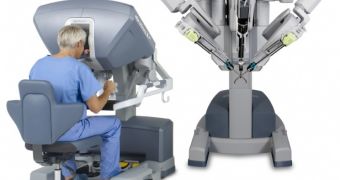Last month we noted that surgical robots were coming under fire because of reports of them failing to work as they should, sometimes doing more harm to patients than good.
The FDA (US Food and Drug Administration) even started an investigation to see what all the new reports mean.
Now we find out that the FDA is really concerned about the Intuitive Surgical da Vinci system, and the fact that it was used in 367,000 procedures before the problems came to light.
Such systems are both physical and virtual, which is why they aren't easy to analyze, and the problems are hard to pinpoint.
Still, the FDA did its best, and continues to do so, since it can't exactly sit by and not do something to prevent patients from coming to more harm.
There are no official records of the investigation yet, and spokespersons even said that the increased mishaps reports could be owed to a general increase in the robots' use.
Further inquiries with Intuitive Surgical, however, led to the suggestion that the increasing use of robotic surgical systems enabled the glitch, if there is one, to surface.
The closest guess of researchers is that the debugging software for surgical robots can only show the presence of bugs, not their absence,
At least, now it is possible to see whether there are any modeling and identification of collision errors that shouldn't exist.
For those who don't know, Intuitive Surgical's da Vinci system has three or four arms and is remotely controlled by surgeons, for operations that need high precision and deal with very small areas.
Scientists from the Carnegie Mellon University have added their considerable knowledge to the talent pool dedicated to perfecting the robots. There is, after all, no way that modern medicine will suddenly dump this technological advancement because of a pesky problem.

 14 DAY TRIAL //
14 DAY TRIAL //